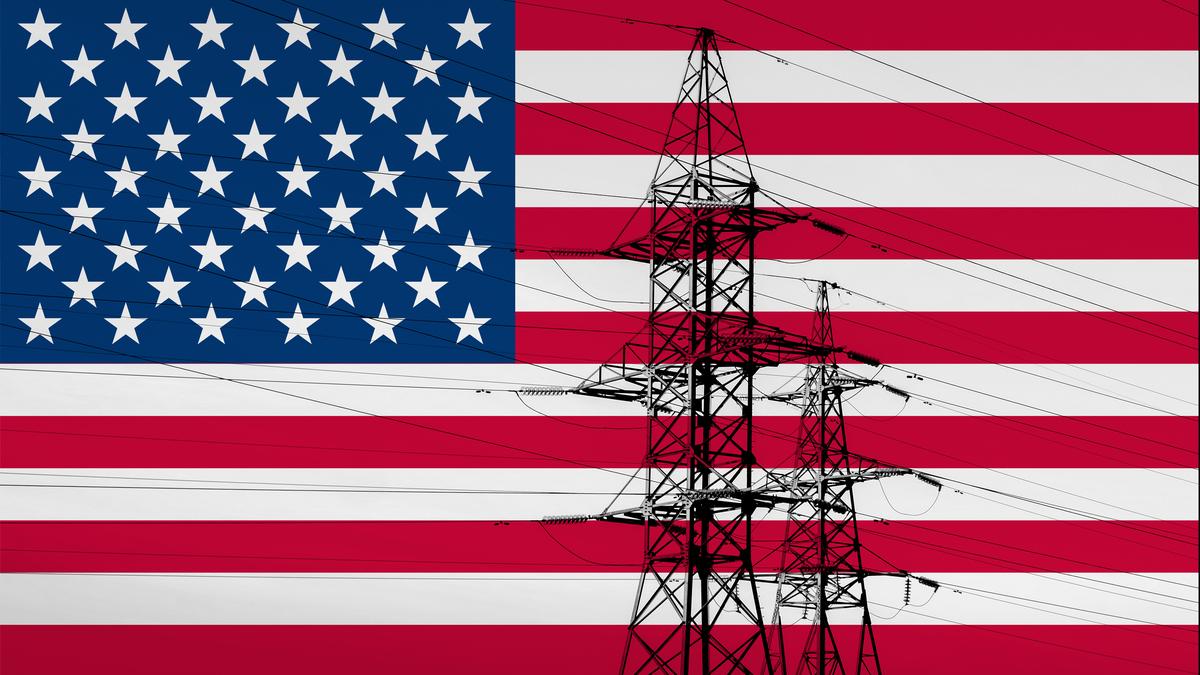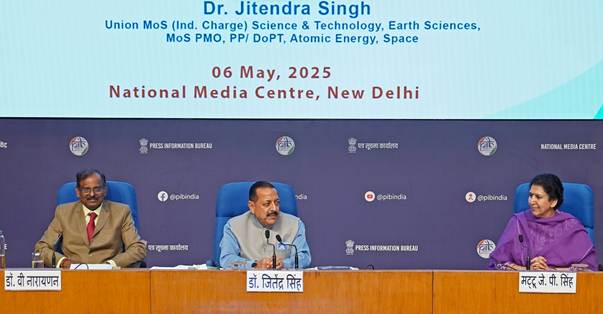India–U.S. Energy Cooperation

- 09 May 2025
In News:
U.S. Vice-President J.D. Vance recently reaffirmed strong bilateral engagement with India in the domains of energy and defence. In parallel, India underscored the need to prioritiseenergy security, technology transfer, and collaboration on critical minerals as pillars of this strategic partnership.
Major India–U.S. Energy Initiatives
- Strategic Clean Energy Partnership (SCEP):Facilitates cooperation across bioenergy, solar power, hydrogen fuels, and energy efficiency measures.
- Initiative on Critical and Emerging Technology (iCET):Focused on advanced technologies such as clean energy, Artificial Intelligence (AI), quantum computing, and Small Modular Reactors (SMRs).
- Civil Nuclear Cooperation:Aims to enhance technology exchange and investments aligned with India’s goal of achieving 100 GW of nuclear capacity by 2047.
- Critical Minerals MoU (2024):Establishes a framework for resilient and transparent supply chains for rare earth elements and critical minerals, along with potential third-country investment opportunities.
Rationale for Strengthening the Energy Partnership
- Energy Security:India’s transition to a $5 trillion economy requires uninterrupted, affordable energy access.
?Example: India's energy import bill reached $153 billion in FY 2023–24, highlighting the need for long-term partnerships. - Climate Commitments:To achieve net-zero emissions by 2070, India must scale up investments in low-carbon technologies, including nuclear, renewables, and green hydrogen.
- Mineral Supply Chain Diversification:With China dominating over 90% of rare earth processing, India seeks reliable and democratic supply partnerships to support its clean energy transition.
- Infrastructure and Financing Needs:Developing nuclear energy infrastructure alone could demand over $180 billion by 2047, requiring foreign capital, joint ventures, and technology collaboration.
Proposed Roadmap for Enhancing Bilateral Energy Ties
- Legal Reform:Revisit the Civil Liability Act to facilitate private sector participation in India's nuclear sector.
?Example: Proposed transfer of SMR technology from Holtec to Indian companies (e.g., L&T, Tata Consulting) requires legal assurances. - Strategic Mineral Reserves Collaboration:Joint stockpiling via India’s Strategic Petroleum Reserves and the U.S. National Defense Stockpile can buffer supply shocks.
- India–U.S. Mineral Exchange Platform:Launch a digital trade and traceability platform using blockchain technology to enhance transparency and co-investment.
- Leverage the Quad Partnership:Deepen trilateral mineral partnerships with Australia and Japan, focusing on processing facilities, R&D hubs, and outreach to resource-rich African nations.
- Accelerate Nuclear Rollout:Standardise nuclear reactor designs, streamline regulatory approvals, and aim to install 5–6 GW of new nuclear capacity annually by the early 2030s.
- Green Financing Mechanisms:Develop innovative funding frameworks such as green bonds, blended finance, and leverage multilateral funding for clean energy and mineral projects.
IMO’s Draft Net-Zero Framework for Shipping
- 09 May 2025
In News:
The International Maritime Organization (IMO) has approved a draft Net-Zero Framework aimed at achieving net-zero greenhouse gas (GHG) emissions from global shipping by around 2050. This is a major milestone in aligning the maritime sector with global climate goals.
Overview of the Draft Net-Zero Framework
What is it?
The framework proposes a legally binding global mechanism to reduce GHG emissions in the maritime industry. It is the first international effort to combine sector-wide emissions caps with a carbon pricing model, setting a precedent for other global industries.
Key Features
- Legal Foundation: Introduced under Chapter 5 of MARPOL Annex VI, focusing on the prevention of air pollution from ships.
- Global Fuel Standard (GFI): Requires ships to reduce GHG intensity of fuel on a “well-to-wake” basis (i.e., accounting for emissions from fuel production to usage).
- Carbon Pricing Mechanism:
- Ships that exceed GFI thresholds must purchase remedial credits.
- Ships using low-GHG fuels can earn and trade surplus credits.
- IMO Net-Zero Fund:
- Redistributes carbon revenues to support:
- Zero-emission vessels
- R&D and capacity building
- Climate resilience initiatives in Small Island Developing States (SIDS) and Least Developed Countries (LDCs).
- Redistributes carbon revenues to support:
- Scope: Applies to ships over 5,000 gross tonnage (GT), covering approximately 85% of global maritime CO? emissions.
- Compliance Tools:
- Credit trading among ships.
- Purchase of credits through the IMO fund.
- Credit banking for future compliance.
Significance of the Framework
- First Global Regulation of Its Kind: Introduces a unified emissions and pricing system for international shipping, transcending national boundaries.
- Promotes Technological Shift: Encourages the adoption of green fuels, carbon capture systems, and hybrid propulsion technologies.
- Supports Climate Goals: Aligns with the Paris Agreement and the IMO’s 2023 Strategy for emissions reduction.
- Equity and Justice-Based Approach: Prioritises financial and technological support to vulnerable maritime nations.
- Catalyst for Green Shipping: Expected to boost demand for ammonia, green methanol, and hydrogen-based marine fuels.
Cashless Treatment of Road Accident Victims Scheme, 2025
- 09 May 2025
In News:
The Government of India has recently introduced the Cashless Treatment of Road Accident Victims Scheme, 2025, aimed at providing immediate, hassle-free medical care to individuals injured in road accidents. This initiative reflects the government's commitment to strengthening the emergency healthcare response system and reducing fatalities due to delays in treatment.
Key Features of the Scheme:
- Universal Eligibility: Any person injured in a road accident involving a motor vehicle on a public road anywhere in India is eligible for cashless treatment.
- Financial Coverage: The scheme offers a maximum coverage of ?1.5 lakh per accident victim, valid for up to seven days from the date of the accident.
- Designated Hospital Network: Victims can avail full cashless treatment only at empanelled hospitals under the scheme. In non-designated hospitals, treatment will be restricted to initial stabilisation, as per official guidelines.
Implementation Mechanism:
- National Health Authority (NHA): The NHA is the central coordinating body for scheme implementation. It will work closely with state health agencies, police, and hospital networks.
- State-Level Execution: In each state and Union Territory, the State Road Safety Council serves as the nodal agency, responsible for:
- Coordinating the onboarding of designated hospitals.
- Managing treatment procedures and claim settlements.
- Facilitating real-time communication through a dedicated online portal.
- Monitoring Framework: A 17-member Steering Committee, chaired by the Secretary, Ministry of Road Transport and Highways, has been constituted to oversee and monitor implementation and address policy-level concerns.
Significance and Impact:
- Addresses Financial Barriers: By offering cashless access to emergency care, the scheme reduces the out-of-pocket burden on accident victims and their families.
- Improves Emergency Response: Ensures timely medical intervention, a critical factor in saving lives during the "golden hour" after a road accident.
- Promotes Inter-Agency Coordination: Brings together multiple stakeholders—healthcare, law enforcement, and road safety agencies—on a unified digital platform for better service delivery.
- Nationwide Coverage: Marks a paradigm shift in accident response policy, aiming to make quality trauma care accessible across both urban and rural India.
Lagrangian Growth-Advection Model
- 09 May 2025
In News:
In a significant advancement for climate science, researchers from the Monterey Bay Aquarium Research Institute (MBARI) and Florida State University have developed a novel method to more accurately estimate oceanic carbon export using satellite data. This method, called the Lagrangian Growth-Advection Model, enhances our understanding of the ocean’s role in sequestering atmospheric carbon dioxide (CO?).
What is the Lagrangian Growth-Advection Model?
The model integrates Lagrangian tracking (which follows individual fluid parcels in motion) with advection (the horizontal movement of water) and biological growth processes. This innovative framework allows scientists to trace the journey of phytoplankton and the associated carbon flux as they move with ocean currents—particularly in dynamic regions such as the California Current upwelling system.
Key Innovations:
- Captures Spatial and Temporal Lags: Unlike conventional models, this approach accounts for delays between carbon production at the surface and its eventual export to deeper waters.
- Incorporates Biological Complexity: The model factors in zooplankton activity, biological succession, and advection of plankton communities, offering a more comprehensive representation of the carbon cycle.
- Beyond Ocean Colour: Traditional models rely heavily on ocean colour data, which is limited to surface chlorophyll concentration. The new model goes beyond this by incorporating additional ecological and physical processes.
Validation and Performance:
The model’s predictions were validated against deep-sea carbon flux measurements, particularly at Station M—a long-term ocean floor observatory operated by MBARI. Remarkably, it explained episodic pulses of carbon export previously unaccounted for by older models, marking a significant improvement in understanding carbon dynamics.
Why this Matters:
The biological pump—the process by which marine organisms convert dissolved CO? into organic carbon that eventually sinks to the deep ocean—is a crucial mechanism for long-term carbon sequestration. The ocean currently absorbs a substantial share of anthropogenic CO? emissions, helping mitigate global warming. Accurate estimates of this process are vital for climate modelling and carbon budgeting.
Existing satellite-based models fall short in capturing the subsurface processes and time-lagged carbon fluxes that significantly impact overall carbon export. The Lagrangian Growth-Advection Model addresses these limitations, offering a more realistic and dynamic understanding of the ocean’s carbon cycle.
Global Space Exploration Conference (GLEX) 2025

- 09 May 2025
In News:
India is set to host the 12th edition of the Global Space Exploration Conference (GLEX) 2025 from 7th to 9th May 2025 in New Delhi, marking a significant milestone in the nation's emergence as a key global player in space exploration.
Key Highlights of GLEX 2025:
- Theme: “Reaching New Worlds: A Space Exploration Renaissance”
- The conference theme underscores a renewed global commitment to innovation, inclusivity, and international collaboration in space science and technology.
- Organisers:
- International Astronautical Federation (IAF) – The world’s foremost space advocacy organisation.
- Indian Space Research Organisation (ISRO) – Serving as the primary host, reflecting India’s growing stature in the global space ecosystem.
- Astronautical Society of India (ASI) – Acting as the co-host and supporting India's role in global space diplomacy.
GLEX 2025 is expected to bring together global experts, policymakers, scientists, and industry leaders to discuss cutting-edge advancements, collaborative missions, and the future of space exploration. It will also highlight India's evolution from a regional space power to a central figure in the international space community.
About the International Astronautical Federation (IAF):
- Established: 1951
- Membership: Over 500 organisations from 78 countries, including major space agencies, private companies, academic institutions, and research bodies.
- Vision: “A space-faring world cooperating for the benefit of humanity”
- Motto: “Connecting @ll Space People”
- The IAF promotes global space cooperation and knowledge exchange. Through platforms like GLEX, it fosters dialogue on programmatic, technical, and policy aspects of space missions.
Significance for India:
GLEX 2025 reflects India’s growing prominence in the global space domain, reaffirming its commitment to peaceful space exploration and international collaboration. The event offers a valuable opportunity for India to showcase its achievements, build new partnerships, and contribute to shaping the future of global space policy and science.
